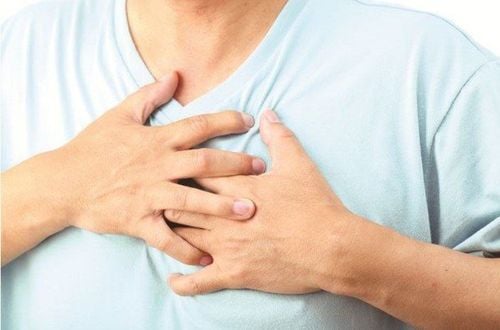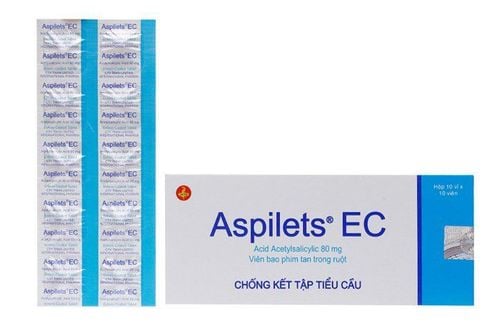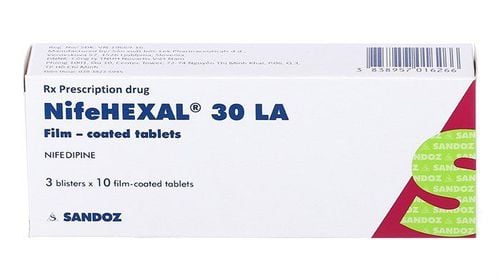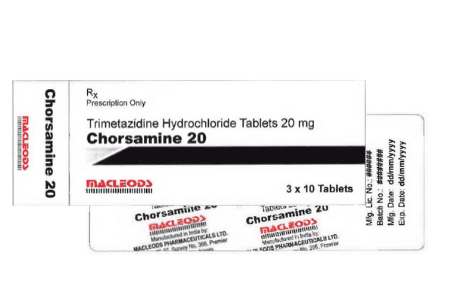This is an automatically translated article.
Posted by Specialist Doctor I Nguyen Cong Hoa - Intensive Care Unit - Vinmec Times City International HospitalPrinzmetal's angina is rare (about 2%) and occurs more often in young patients. With Prinzmetal's angina, the patient will experience pain and discomfort at rest, at night or early in the morning. Pain can range from mild to severe and is relieved with medication.
1. History of birth
In 1768, Dr. William Heberden was the first to describe the typical angina caused by coronary artery disease. The cause of angina attacks was initially determined to be narrowed coronary arteries. This pain is triggered by strenuous activities such as exercise and is relieved with rest or taking nitroglycerin.In 1959, Dr. Myron Prinzmetal described another type of angina, which usually occurs with no exercise/exertion and at certain times of the day such as night and often awakens the patient from sleep. This variant angina differs from the classic angina described by Dr. Heberden in that it is caused by intermittent coronary spasm. Coronary arteries are usually not blocked by pathological processes such as atherosclerosis, occlusive stenosis, or spontaneous dissection (tears in the coronary artery wall).
The cause of variant angina (Prinzmetal) is coronary artery spasm caused by exposure to cold weather; Stress; Medicines that constrict or narrow blood vessels; Smoke; Use cocaine or coffee.
2. Epidemiology
Prinzmetal's angina is rare (about 2%) and occurs more often in young patients. At present, the prevalence or frequency of the disease is uncertain because of misdiagnosis or confusion with other conditions of chest pain.Some studies show that Japanese and Asian populations are three times more likely to develop Prinzmetal's angina than white populations. The average age of onset of Prinzmetal's angina is about 40-50 years, in which women are at higher risk than men.
3. Pathogenesis of Prinzmetal's angina
Prinzmetal's angina is caused by focal or diffuse constriction of the coronary arteries leading to high-grade obstruction. Patients may experience transient ischemic attack or myocardial infarction if Prinzmetal's angina attacks persist.According to the study, increased vascular smooth muscle reactivity is believed to be the key point of the pathogenesis of Prinzmetal's angina. This condition can occur even if the person is not exerting themselves, does not exercise intensely, or has pre-existing medical conditions.
In particular, Prinzmetal's angina can also occur in people with normal coronary arteries. However, it is more common in people with plaques of varying severity.
Animal and clinical studies have shown that increased coronary smooth muscle reactivity is a key factor in the pathogenesis of coronary artery spasm. Important observations include:
Many vasoconstrictors have been used to induce coronary vasoconstriction such as: Acetylcholine, Serotonin, Histamine, Noradrenaline and Dopamine; receptor antagonists (ketanserin and prazosin); Increased sensitivity to calcium of the myocardium.

3. Symptoms of Prinzmetal's angina
With Prinzmetal's angina, the patient will experience pain and discomfort at rest, at night or early in the morning. Pain can range from mild to severe and is relieved with medication.4. Diagnosis of Prinzmetal's angina
There are three core factors that establish the diagnosis of Prinzmetal's angina:Nitrate-responsive angina: Usually occurs spontaneously, with at least one of the following: Pain at rest or do not exert yourself, especially between the night and early morning; Pain level has a significant change during the day, decreasing in the morning; When the patient is stressed, emotional or hyperventilation hyperventilation can lead to a pain; Using calcium channel blockers (but not beta blockers) can stop pain episodes. Transient ischemic electrocardiogram (ECG) changes: Occurs during the spontaneous phase, including any of the following, in at least 2 adjacent leads: ST segment elevation ≥0, 1 mV; ST segment concave ≥0.1 mV; New negative U wave. Coronary artery spasm: Defined as total or temporary coronary artery occlusion (spasm >90%) with angina and ischemic ECG changes spontaneously or in response to a stimulus ( usually acetylcholine, ergot or hyperventilation). In patients with a documented episode of Prinzmetal's angina, the diagnosis can be made on the basis of nitrate-responsive angina accompanied by transient ECG changes. Occasionally, an episode of spontaneous Prinzmetal's angina may also occur during diagnostic angiography so that all three are documented.
In fact, episodes of spontaneous Prinzmetal's angina often cannot be recorded, at which point the doctor will use stimulation testing to diagnose. During stimulation testing, the diagnosis of Prinzmetal-type angina is confirmed if stimulation causes chest pain, transient ECG changes, and spasm response >90%.
The process of diagnosing Prinzmetal's angina should be distinguished from such pathologies as:
Acute pericarditis; Angina pain; Anxiety disorders ; Dissection of the aorta; Cocaine toxicity; Esophageal spasm ; Gastroesophageal reflux disease ; Heart attack; Panic disorder; Unstable angina.
5. Treatment and management
Treatment for Prinzmetal's angina will focus on relieving pain and preventing complications such as: myocardial damage and arrhythmias. In parallel with the treatment of Prinzmetal's angina, it is necessary to encourage patients to change their lifestyle, quit smoking and avoid taking drugs that can cause coronary artery spasm to reduce the frequency of attacks.Some of the pharmacological therapies used in the treatment of Prinzmetal angina include:
Use of calcium antagonists: Play an important role in the management of Prinzmetal angina. It is a first-line treatment, which dilates coronary arteries and relieves symptoms in 90% of patients. Patients should use calcium antagonists at night because signs of disease are more common in the middle of the night and early in the morning. High doses of long-acting calcium antagonists such as diltiazem, amlodipine, nifedipine or verapamil are recommended. Dose titration should be performed on an individual basis with adequate response and minimal adverse effects. In some cases, the use of calcium antagonists may be effective in patients who have a poor response to an agent.

Currently, treatment with guanethidine, clonidine or cilostazol has also been reported to be beneficial in patients receiving calcium channel antagonists. However, these drugs have not been thoroughly studied in this setting.
Statins and fluvastatin have been shown to be effective in preventing coronary vasospasm and simultaneously exerting their benefits through endothelial nitric oxide or directly acting on vascular smooth muscle.
6. Complications of Prinzmetal's angina
Some complications of Prinzmetal angina if not treated promptly include:Arrhythmia; Sudden death; Heart attack. Experts recommend taking a professional approach to Prinzmetal's angina because it is not an easily diagnosed condition.
In general, the long-term prognosis for Prinzmetal's angina is good if the patient is adequately treated (up to 75% of patients are MI free after 5 years). Among them, factors that may determine the survival of infarction are the presence and severity of pre-existing coronary stenosis, the number of vasospasm-sensitive vessels and/and the use of channel blockers. calcium. In fact, up to half of patients with angina will have persistent, recurrent symptoms even during treatment or within the first 3 years after onset.
Patients need to go to reputable medical facilities to be examined by a specialist doctor, thereby getting the best treatment regimen. Currently, Cardiovascular Center - Vinmec International General Hospital is one of the leading centers in the country for examination, diagnosis, screening and treatment of cardiovascular diseases. Vinmec not only has the convergence of a team of experienced and reputable leading experts in the field of surgical treatment, internal medicine, interventional cardiac catheterization, but also has a system of modern equipment, on par. with the most prestigious hospitals in the world such as: MRI 3 Tesla (Siemens), CT 640 (Toshiba), high-end endoscopy equipment EVIS EXERA III (Olympus Japan), anesthesia system High-class Avace, Hybrid operating room according to international standards... The Cardiovascular Center at Vinmec International General Hospital has achieved many successes and gained the trust of a large number of patients.
Please dial HOTLINE for more information or register for an appointment HERE. Download MyVinmec app to make appointments faster and to manage your bookings easily.














